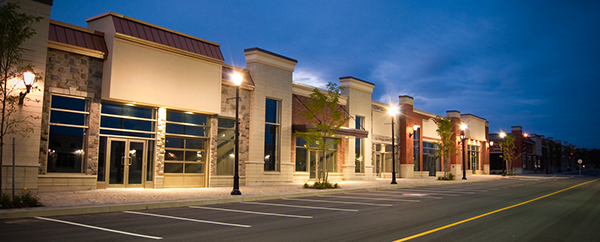
The security of a location is often impacted by physical design elements such as architecture, landscaping, lighting and many other elements. Carefully considering these features with safety in mind can result in a space that naturally discourages crime simply by its design. That’s the foundational theory of the internationally practiced, multi-disciplinary approach to security known as “Crime Prevention Through Environmental Design,” or CPTED (pronounced Sep-ted). Read on for the salient points of how to design your property to deter crime.
What is CPTED?
The main principles of CPTED began in the 1960s and were developed over a period of several decades by many individuals that contributed their expertise to the theory of “defensible space.” The theory is largely rooted in the concept that the way a public space is designed can play a large part in subconsciously deterring criminal activity. In turn, this increases the security of the general public using that space. The main tenets of CPTED can be summarized into three main categories: surveillance, access control and territorial reinforcement.
These terms are often preceded by the term “natural”: when the space’s inherent design is rooted in promoting security, the benefits tend to result “naturally” with very little conscious effort on anyone’s part. This is because CPTED combines principles of both design and human behavior, leveraging both to mutual advantage.
Related: How to reduce vandalism at your tribal business
Natural Surveillance
Natural surveillance increases the perceived risk of committing a crime in a given space. Since most criminal activity is conducted with secrecy in mind, a criminal will often evaluate their odds of success vs. their chances of being observed and apprehended. They typically prefer targets where their approach and retreat are unobserved. Areas that are infrequently travelled, poorly lit or provide ample cover are more likely to be targeted than well-lit, wide open spaces with few places to hide and a steady flow of traffic.
Natural surveillance occurs when a space is designed to deprive potential criminals of any advantages to moving stealthily or covertly. Spaces that are easier to survey increase the perceived sense of being observed, which is also more likely to make a criminal to think twice.
Natural Access Control
Access is another important element criminals consider when making their plans. An open window or door is an easier opportunity than a visibly locked entrance. Access control is all about limiting opportunities for criminals by clearly differentiating both public and private spaces and their normal use, which naturally highlights any deviant activity. For example, if the public is advised by multiple signs that an “entrance is closed; please use other entrance,” anyone lurking at the closed entrance, trying to gain access, is instantly highlighted by their non-compliance, causing others in the vicinity to observe them for any other signs of suspicious activity.
Natural Territorial Reinforcement
This principle promotes increasing the visual impression of ownership and vested interest as a way of deterring criminals. A fence visually delineates a public street from a private yard, a sign clearly indicates specific messages from the owner to passers-by, and well-maintained facilities indicate an owner who’s more likely to challenge criminals attempting to target their property. For example, an unfenced, unmarked property showing signs of neglect is a more attractive target than a fenced home with a well-maintained yard and a “no trespassing” sign on the gate.
Related: Unexpected Closures: Guidelines for Protecting Vacant Property
How to design your property to deter crime
So how do you design your property to deter crime? While a total remodel might not be feasible, there are many actionable ways to increase your property’s security. Start by evaluating your properties’ visual presentation. Perform a visual inspection of your facility exteriors with the following questions in mind:
- How well-maintained does the building look?
- At dawn, dusk and night when natural light is limited, how well-lit are your building exteriors?
- How many physical objects exist where a criminal might find cover? Where are they placed?
- Are there landscape elements that might encourage or deter criminals from approaching? (e.g., large standalone shrubs that can be hidden behind vs. a low, thorny hedge that presents a difficult physical barrier)
- Are there any physical elements that subconsciously reinforce ownership, like fences and signs?
- Are there clearly defined traffic flows and clearly designated entrance and exit points for visitors?
If any of these assessments reveal flaws or other areas for improvement, develop realistic goals for addressing those areas as time and budget permit. While there are many more ways to implement the principles of CPTED at your facilities, determining the answers to these questions will give you an excellent starting point for easily actionable steps to design your properties to deter crime.
For more information, please visit the International CPTED Association’s website or reach out to your tribal risk manager, Mark Sherwood, at msherwood@chooseclear.com.
